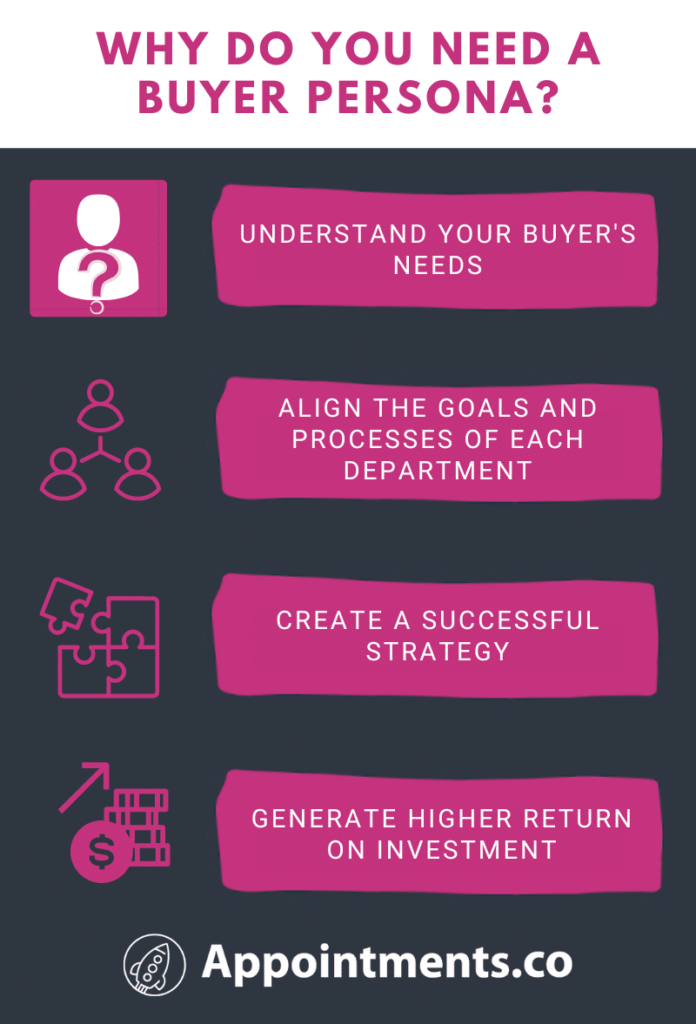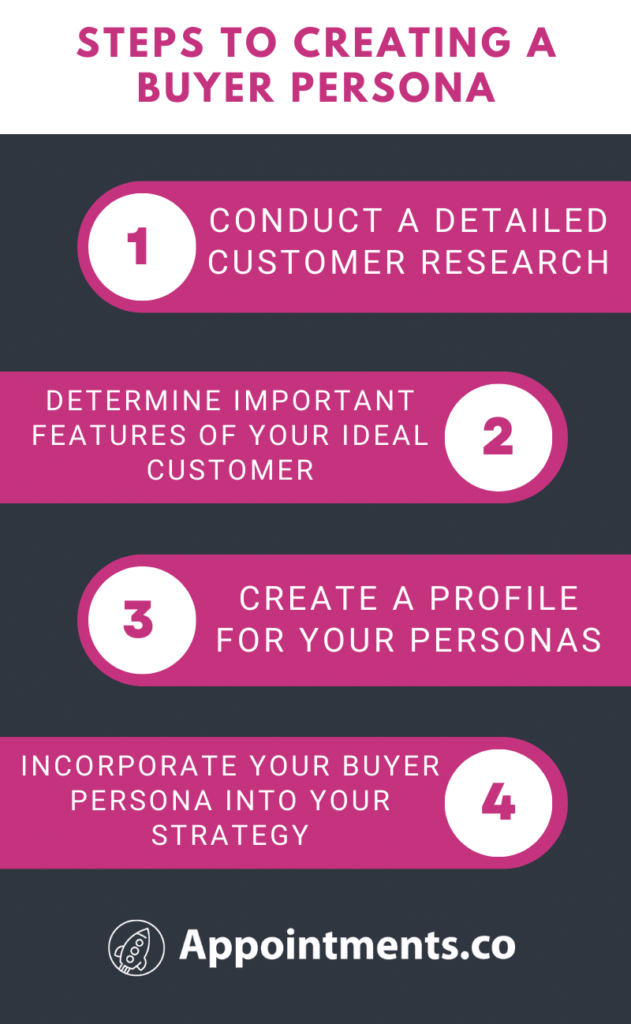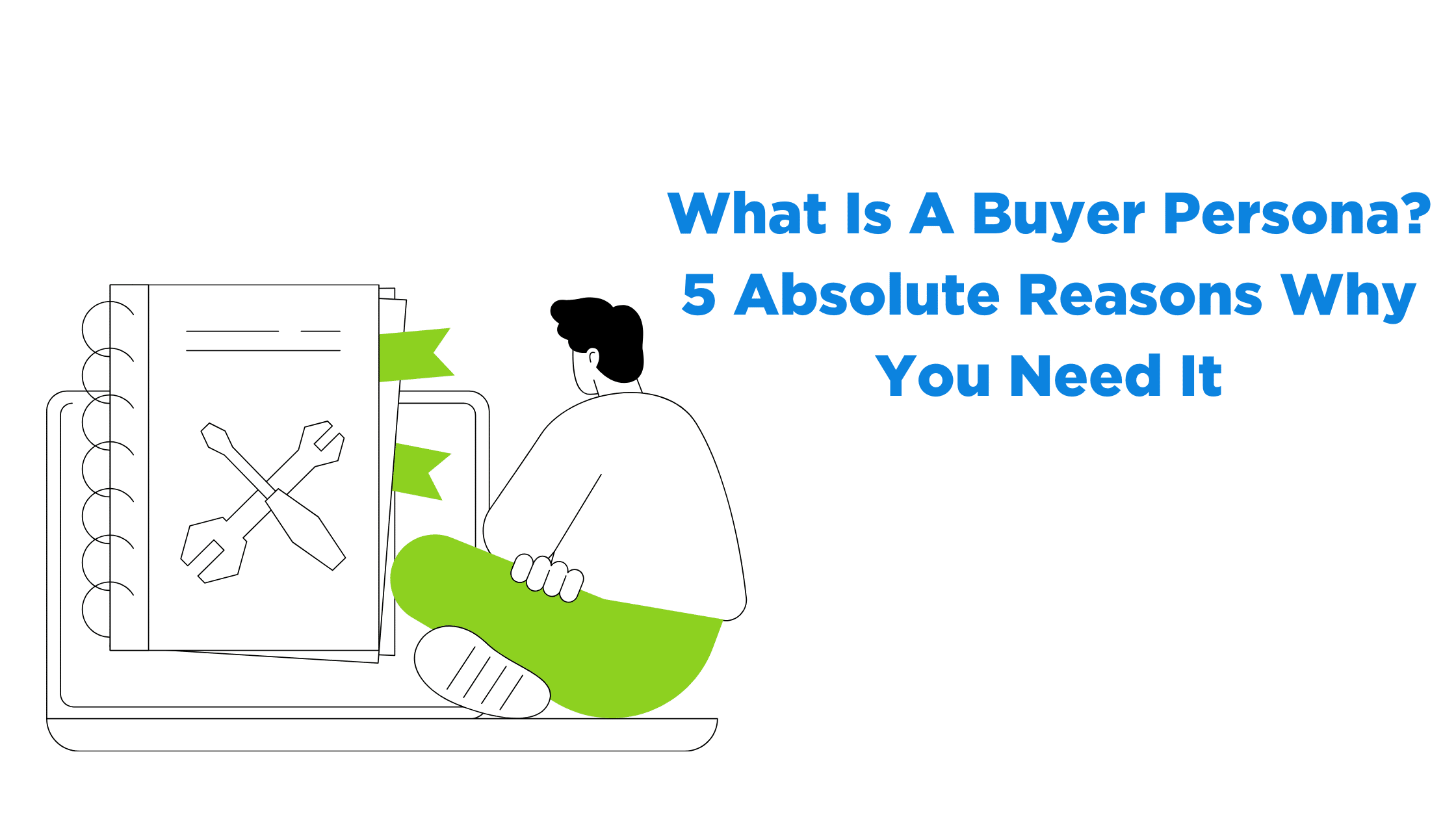“What is a buyer persona?” This could be one of the most buzzing questions in the minds of beginners who just stepped into marketing. Business people must also understand what is buyer persona to identify and design one for their own business. You can’t sell to someone without knowing a little about them. You need to know who they are, what their interests are, and how to talk to them. Not every customer is the same, so you need to know more than just their names. From a business perspective, each market is unique, which means what works for one may not work for another.
A buyer persona can help you find the right marketing strategy for your target market. But what is a buyer persona?
This article explains everything you need to know about buyer personas. To be specific, it covers topics, like “what is a buyer persona,” “why do you need it,” and “how do you create one.”
What Is a Buyer Persona: Definition and Types
A buyer persona represents your ideal customer. It sheds light on important information, such as their demographics, goals, issues, and buying habits. You can create buyer personas by researching your customers. And you don’t need to have just one persona. Most businesses have many buyer personas for different customer types.
Developing your ideal customer profile should be your main priority. Doing so can show your potential customers that you take the time to understand their needs. And when you know what they need, you can create personalized products or services, as well as messages.
This is a huge game-changer since a lot of customers love personalization. 78% of customers prefer, recommend, or pay extra for a company that offers a customized service or experience.
Different Types of Buyer Personas
Another important thing to remember is that there’s no such thing as a standard buyer persona template. You can create several personas based on your needs to fully grasp how you should go about your messaging.
The following list below is five examples of buyer personas and who can use each type:
#1 – Demographic Buyer Personas
As the name suggests, companies create these personas based on customer demographics.
Who can use this?: Companies with products and services relevant to a specific demographic group. For example, those who sell smartphones can use this data to know how to market certain models to their audience.
#2 – Psychographic Buyer Personas
Companies create these personas based on the customer’s personality, beliefs, hobbies, and lifestyles.
Who can use this?: Companies with products and services that are closely linked with a specific lifestyle. For example, those who sell gaming products target a certain niche that demands specific performance and design.
#3 – Behavioral Buyer Personas
Companies use data about the customer’s buying behavior and decision-making process to create this persona. This can include how they look for items, what influences them, and what kind of customer service they expect.
Who can use this?: Companies that want to improve their sales and customer service. For example, companies that sell products aimed at experts should have behavioral personas.
#4 – Industry Buyer Personas
B2B companies that operate in a specific industry often use this type of buyer persona. They use the demands, pain points, and challenges of customers in their particular industry.
Who can use this?: Industrial firms that offer machines like 3D printers. These companies should tailor their products to the specific demands of their customers.
#5 – Service Buyer Personas
Just like industry buyer personas, companies use specific needs, key issues, and challenges to create this persona. The difference is that they refer to the services of the company.
Who can use this?: Service providers that want to enhance their workflow and client journey. For example, SaaS marketing tools should adapt their products to the workflow of service personas.
Why Do You Need a Buyer Persona?
After asking, “what is a buyer persona,” the next question you may have is, “do you need one?” The quick answer is, yes. Every business that wants to succeed needs buyer personas.
The goal of creating one is to know what constitutes a successful customer. If you have the recipe for your perfect customers, you can replicate them in the future. To be specific, buyer personas let you do the following:

#1 – Understand Your Buyers’ Needs
Developing a buyer persona is critical for businesses to establish trust and solve the issues of their customers. These can help you better understand your customers and develop campaigns that target their unique wants, goals, and motivations.
Knowing how your customers think, feel, or react to your messages or products increases their likelihood of buying them. You can also increase your reach with these personas by delivering the right message to the right customers at the right time.
#2 – Align the Goals and Processes of Each Department
Everyone in the organization can benefit from your buyer personas, including:
- The product development team
- The content creation team
- The customer support team
- The corporate organization
Creating a list of characteristics of your ideal customer can give each department the same view of who they are. With this, they can work together to attract and serve your target customers.
#3 – Create a Successful Strategy
Buyer personas help the marketing team to acquire, qualify, and convert leads. It also improves communication between the sales and marketing teams. With this, they can create accurate strategies geared to the demands of customers at each point of their journey.
#4 – Generate Higher Return on Investment
You should gather the right data to create accurate buyer personas that give insights into customer behavior. With this, you can develop more tailored experiences for your customers. This results in more engagement and conversions, which ultimately improves your ROI.
How To Create a Buyer Persona?
Researching your audience is time-consuming, but worthwhile. When done right, it provides a wealth of information about your clients. These are the steps to developing an effective buyer persona for your company.

#1 – Conduct Detailed Customer Research
The first step is to gather as much information about your target audience as you can. This includes analyzing the data of existing customers and interviewing online forums and social media groups.
You can use tools, like Google Analytics to do an extensive study on your customers’ behavior and habits.
#2 – Determine Important Features of Your Ideal Customer
After acquiring the information, you can use it to pinpoint the main features of your ideal customer. Look for the following elements to create your buyer persona:
- Demographics – This includes age, gender, marital status, educational level, occupation, and annual income.
- Behavior and psychographics – You can use the VALS (Value, Attitude, and Lifestyles) Framework.
- Influencers – These are factors that influence their buying decisions.
- Goals, challenges, and issues – The goals are what they want to achieve, which you can identify as primary, secondary, and tertiary. The challenges are the barriers to achieving these goals, which leads to their key issues.
#3 – Create a Profile of Your Personas
Develop a complete buyer persona profile using the information you got, and also include the following:
- Background
- Job title
- Preferred communication methods
This can help you better understand their wants, needs, and goals. But make sure you create a different persona for each type of customer to offer interesting and relevant products to them.
Don’t forget to name your personas as well. This makes the profile more human and accessible. More importantly, it may be easier to recall which marketing strategy is for which buyer persona. By doing so, you can deliver content that suits each segment and provides the best customer experience.
#4 – Incorporate Your Buyer Persona into Your Strategy
Now, all that’s left is to implement the target personas in your business plan. Use your personas to define your messaging and tone of voice. With this, you can better connect with your target customer, and create content that increases engagement.
Related Articles
Reasons to Hire an Appointment Setter
B2B Sales Guide – Best Guide to Know The Process
Inside Sales – An Ultimate Guide
Frequently Asked Questions (FAQs)
1. What is a negative buyer persona?
These are the behaviors, values, and needs of people who will likely not become your customers. In short, they’re the ones you won’t direct your marketing efforts to.
They can be students who visit your website to get information for their assignments. There are also those who don’t have the means to use your services. You can also include people who are not a part of the decision-making process when it comes to buying your products.
2. What does it mean if your buyer persona overlaps with your current customers?
A buyer persona is not intended to describe the profile of your current customers. You should be creating these personas to know what your perfect customers look like. If you find that the two are overlapping, then you’re in luck! This means you’re effective in targeting and attracting the right customers for your company.
Final Thoughts
Having a buyer persona gives meaning to the company. You need someone to buy your products and services, but it is tough to increase your sales if you don’t know who to market to, how they think and feel, and where they are.
This strategy is beneficial not only for you but also for your customers. They will feel seen and understood if you upgrade and focus your messaging and product content on them. How can they say no to something that feels tailor-made for them? A buyer persona is not a real person, but it can help you win loyal customers.
Illustrations: Storyset



